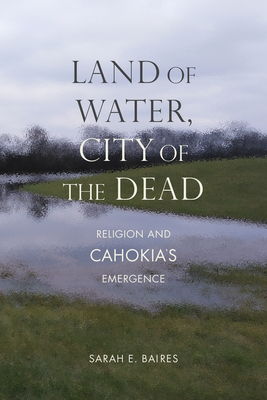You are here
Back to topLand of Water, City of the Dead: Religion and Cahokia's Emergence (Archaeology of the American South: New Directions and Perspectives) (Hardcover)
$71.44
This item is not available this time
This item is not available this time
Description
Explores the embodiment of religion in the Cahokia land and how places create, make meaningful, and transform practices and beliefs
Cahokia, the largest city of the Mississippian mound cultures, lies outside present-day East St. Louis. Land of Water, City of the Dead reconceptualizes Cahokia’s emergence and expansion (ca. 1050–1200), focusing on understanding a newly imagined religion and complexity through a non-Western lens. Sarah E. Baires argues that this system of beliefs was a dynamic, lived component, based on a broader ontology, with roots in other mound societies. This religion was realized through novel mortuary practices and burial mounds as well as through the careful planning and development of this early city’s urban landscape.
Baires analyzes the organization and alignment of the precinct of downtown Cahokia with a specific focus on the newly discovered and excavated Rattlesnake Causeway and the ridge-top mortuary mounds located along the site axes. Land of Water, City of the Dead also presents new data from the 1954 excavations of the ridge-top mortuary Wilson Mound and a complete analysis of the associated human remains. Through this skeletal analysis, Baires discusses the ways that Cahokians processed and buried their ancestors, identifying unique mortuary practices that include the intentional dismemberment of human bodies and burial with marine shell beads and other materials.
About the Author
Sarah E. Baires is an assistant professor of anthropology at Eastern Connecticut State University.
Praise For…
“Land of Water, City of the Dead: Religion and Cahokia’s Emergence provides a refreshing new take on the origins and organization of Cahokia that is a must read for any Mississippian archaeologist. More generally, it will be of interest to archaeological scholars of religion and social complexity who work elsewhere in the World. On a final note I commend Baires for taking on the important task of analyzing long neglected legacy collections and I look forward to seeing where her research goes from here.”
—Midcontinental Journal of Archaeology
“Baires make a good case for her theory of Cahokia. She looks at the great city and its religion in a different way that will aid future studies while promoting new perspectives.”
—American Archaeology
“Baires’s book is a good addition to the available information on Cahokia. She pulls together data from a variety of sources, but most importantly, she provides details on legacy data that are not readily available elsewhere. In addition, Baires develops an argument for looking at Cahokia and religion in a different way, and whether or not you agree with her particular approach, new perspectives always move discussion and knowledge forward.”
—Lynne Goldstein, professor of anthropology at Michigan State University
“The detailed discussion of Cahokia’s ridge-top mounds, the presentation of largely unpublished descriptions of burial features and cultural materials associated with these mounds, and new observations of skeletal materials from Wilson Mound make this a valuable resource for other researchers.”
—Kristin Hedman, coeditor of Transforming the Dead: Culturally Modified Bone in the Prehistoric Midwest
